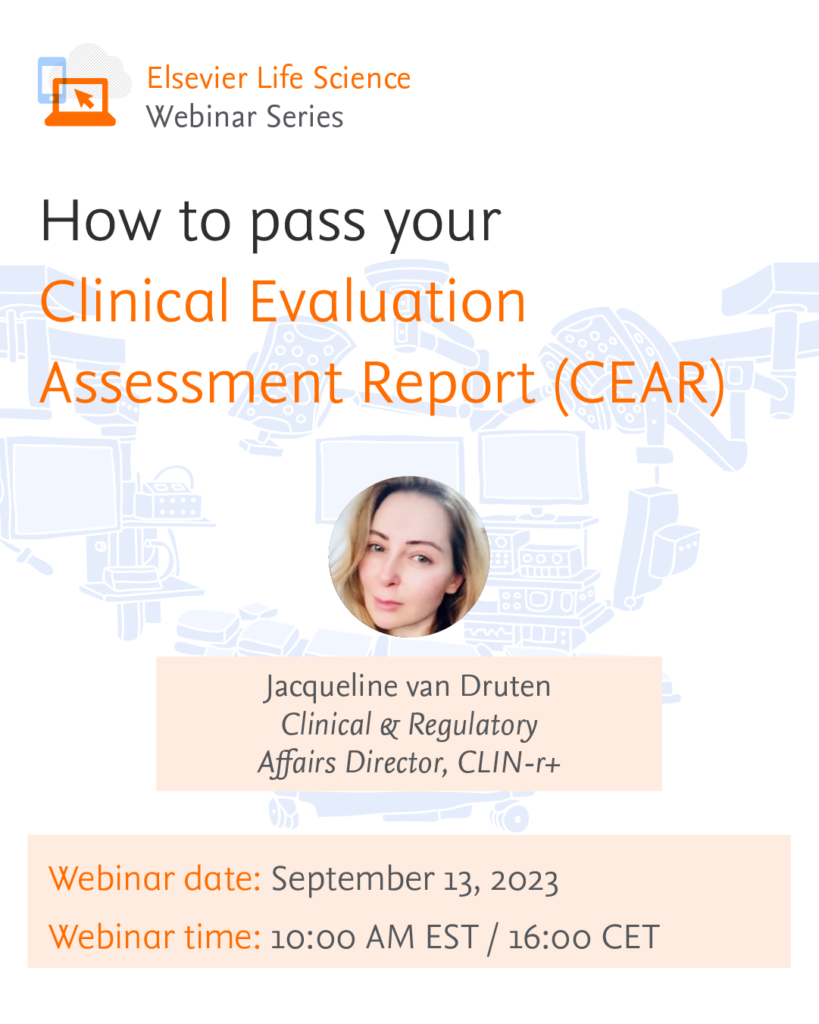Webinar: How to pass your Clinical Evaluation Assessment Report (CEAR)
Creating A Pragmatic Systematic Literature Review Process To Assure EU MDR Approval
- 7pm (BST) Webnesday Sept 14th

Topic: How to pass your Clinical Evaluation Assessment Report (CEAR): Creating a pragmatic systematic literature review process to assure EU MDR approval
The Clinical/Performance Evaluation Report (CER/PER) holds pivotal importance within the context of EU MDR/IVDR applications, determining manufacturers’ eligibility for obtaining the CE mark. Embedded within the Clinical/Performance Evaluation procedure, the systematic literature review (SLR) process emerges as a vital workflow demanding proficiency. Crafting an SLR Standard Operating Procedure (SOP) that aligns with MEDDEV 2.7.1rev4 and the MDCG guidelines could potentially revolutionize not only your CE mark submission but also the post-market trajectory of your medical device. Conversely, if this workflow falls short of compliance with the guidelines, rectifying it might consume considerable time and jeopardize your device’s CE mark.
Our forthcoming webinar delves into the most prevalent findings identified by auditors in relation to the SLR process and its interconnectedness with the Clinical Evaluation segment of your technical dossier. We thoroughly explore strategies to shield your CER from potential repercussions arising from the SLR process. Furthermore, we elucidate the optimal resources for conducting an SLR and furnish you with a comprehensive checklist encompassing the essential components that should be integral to your SLR process’s quality assurance workflow.
Key Takeaways:
• A manufacturer’s SLR SOP significantly influences EU MDR assessment success.
• Clinical Evaluations pose technical challenges requiring proper infrastructure and clinical affairs resources (e.g., skilled SLR reviewers, access to medical databases) for MEDDEV 2.7.1rev4 compliance.
• Non-conformance findings often arise from the CER, with the SLR process being a potential culprit, requiring costly and time-consuming corrections.
• Manufacturers should be aware that NBs allow only 3 rounds of review. Excessive non-conformances lead to halted reviews and NCR feedback highlighting gaps for resolution.
• CER assessment follows QMS review. Weak CER or flawed SLR increases findings, risking unsuccessful applications.
• Success hinges on compliant SLR SOP (refer to checklist) and sufficient resources for proper SLR execution.
Part of the Cracking the Code: Demystifying EU MDR and IVDR Compliance webinar series.
This event has passed but you can still view the recording or visit our MedTech Academy for more information.
